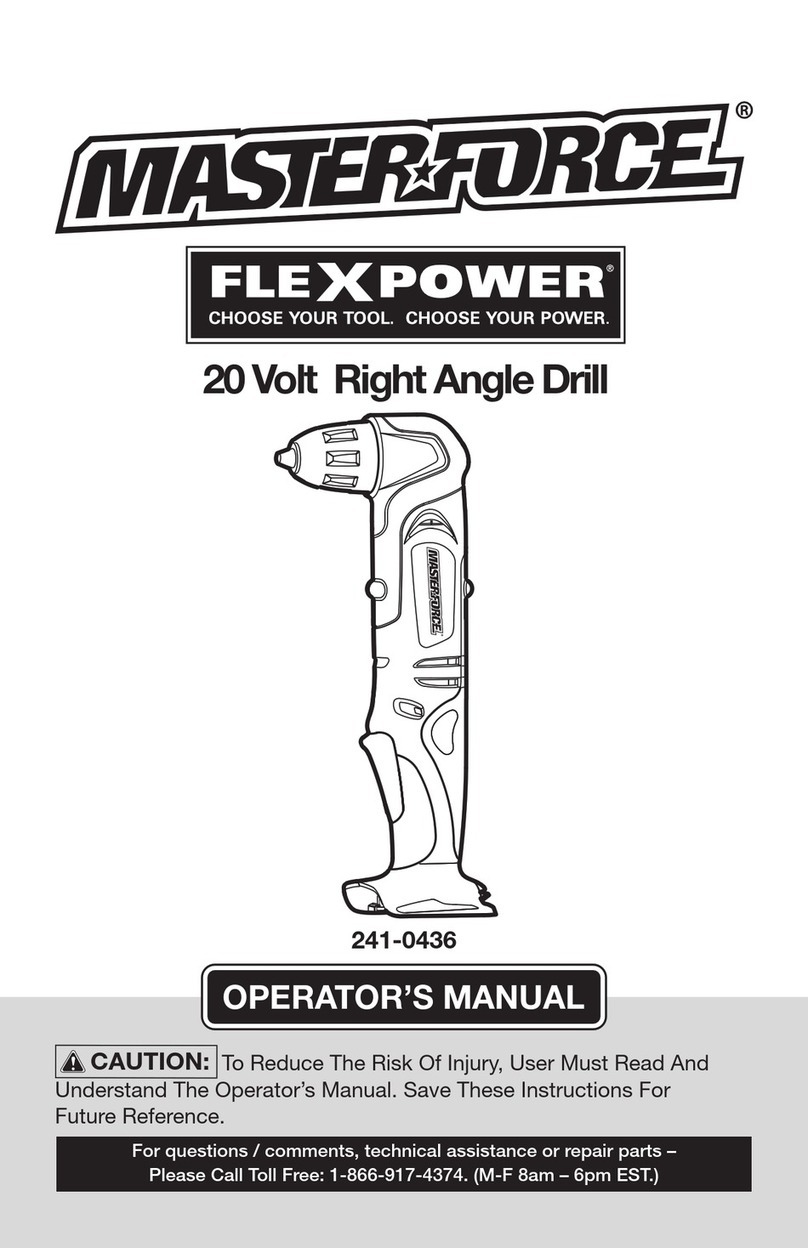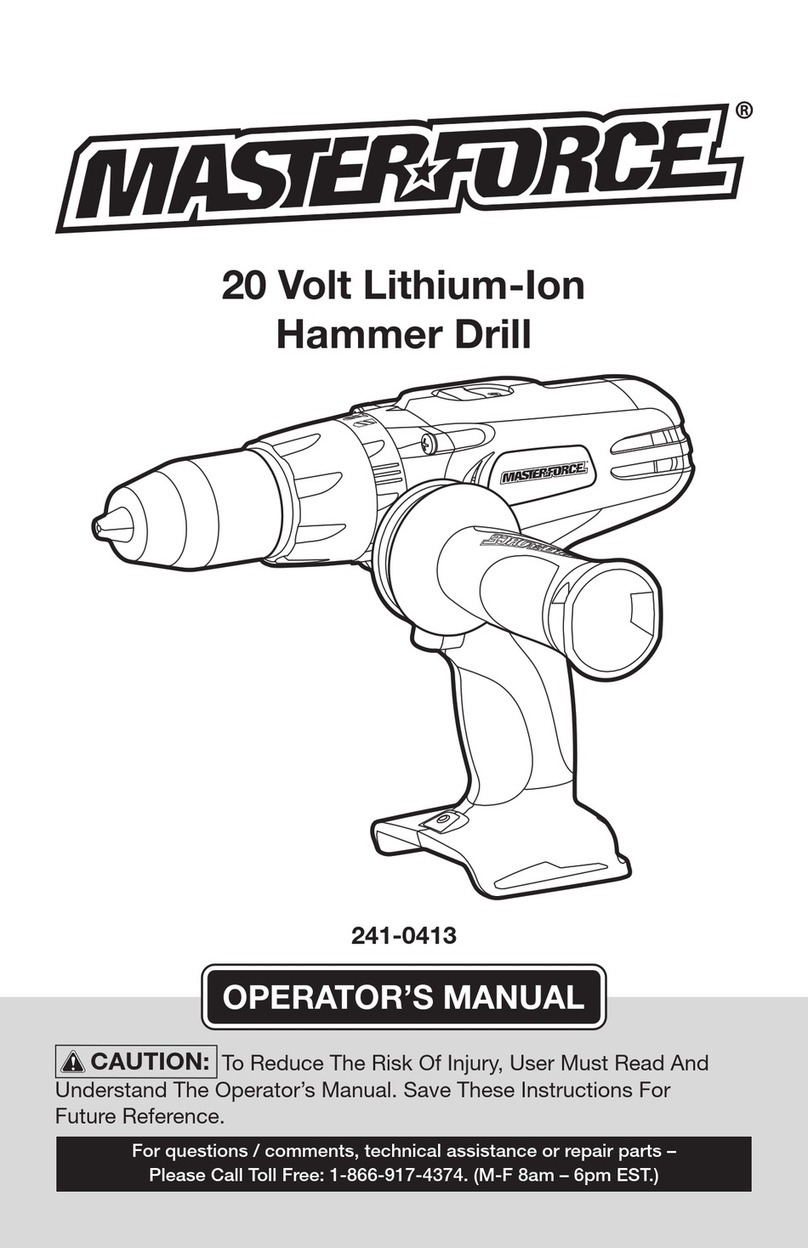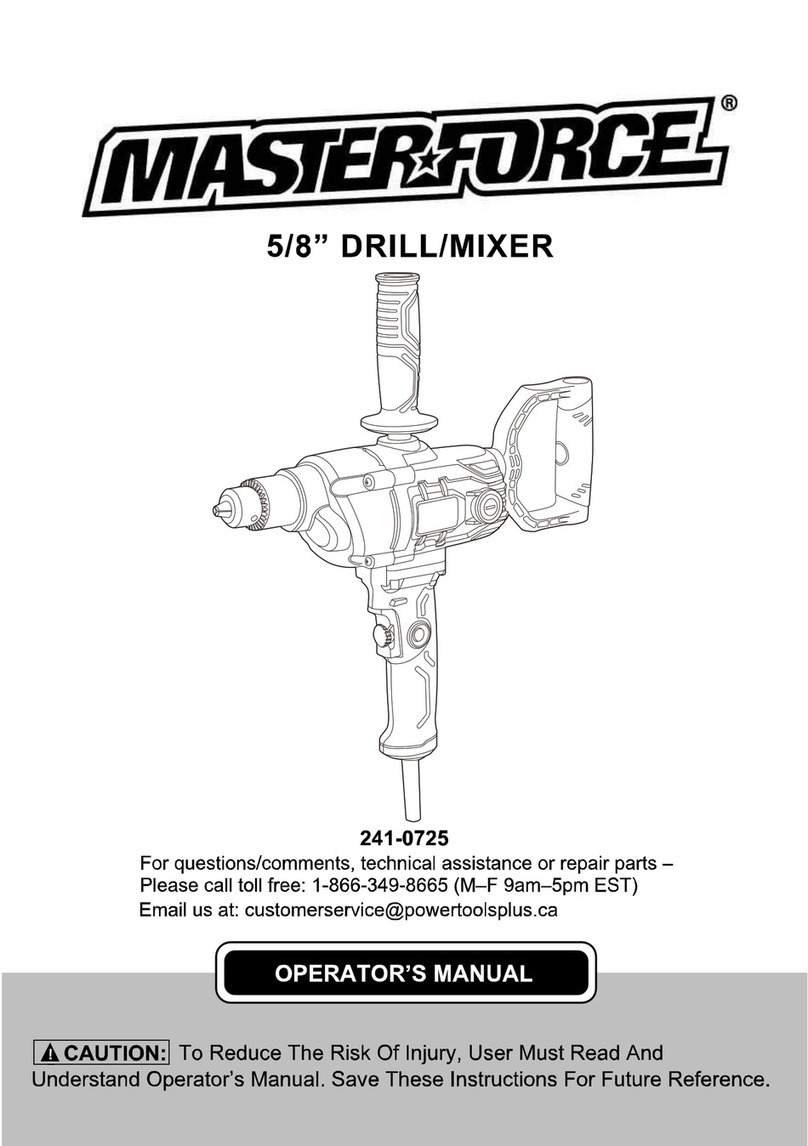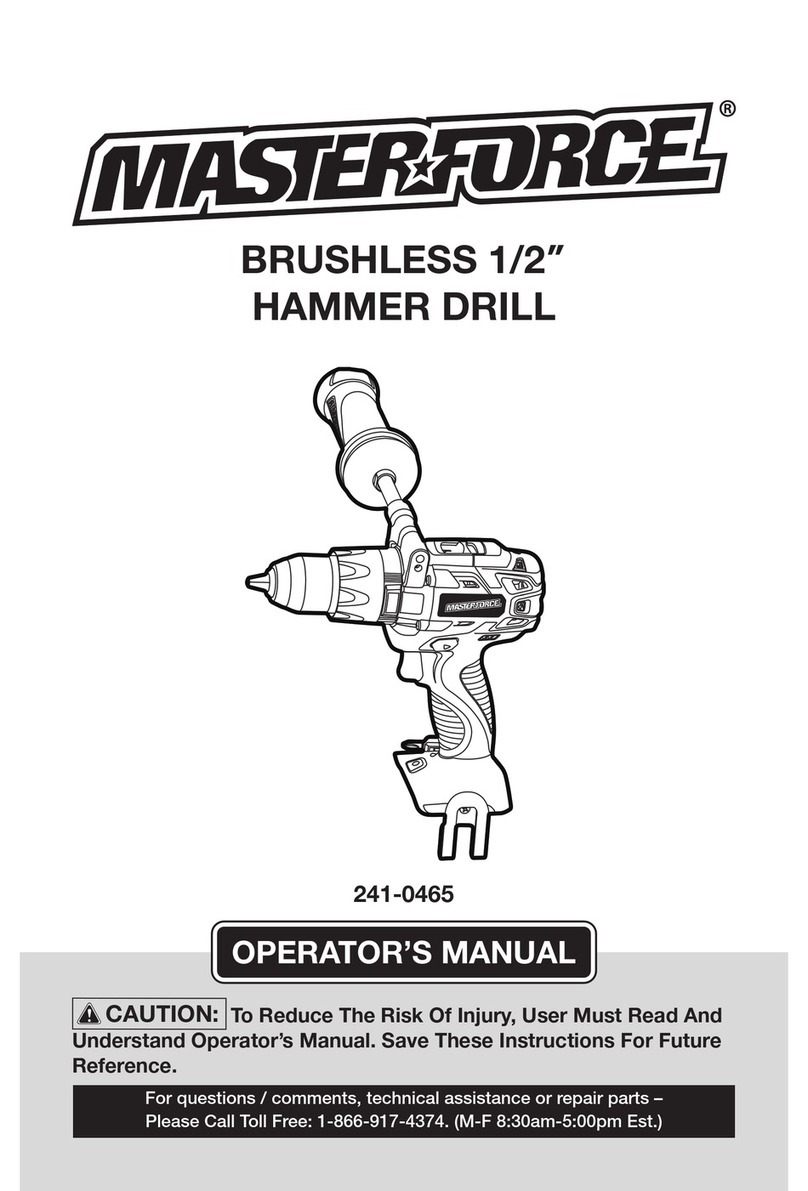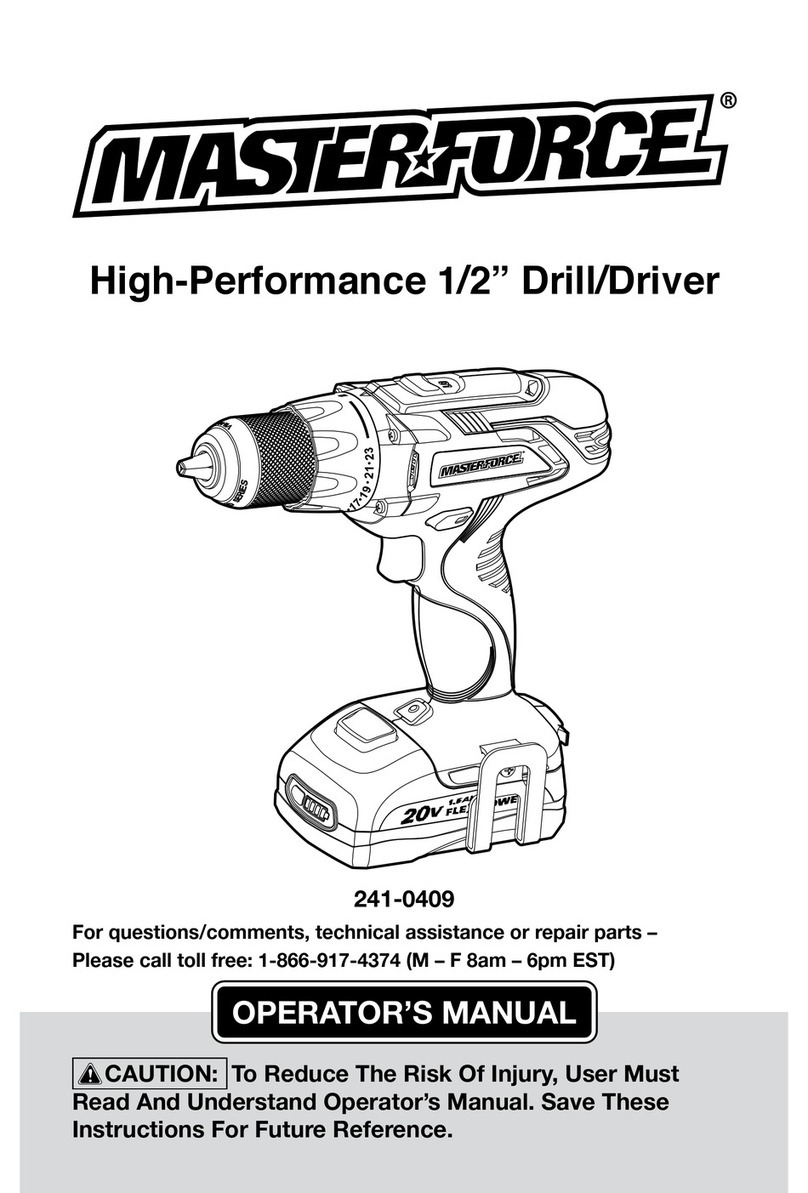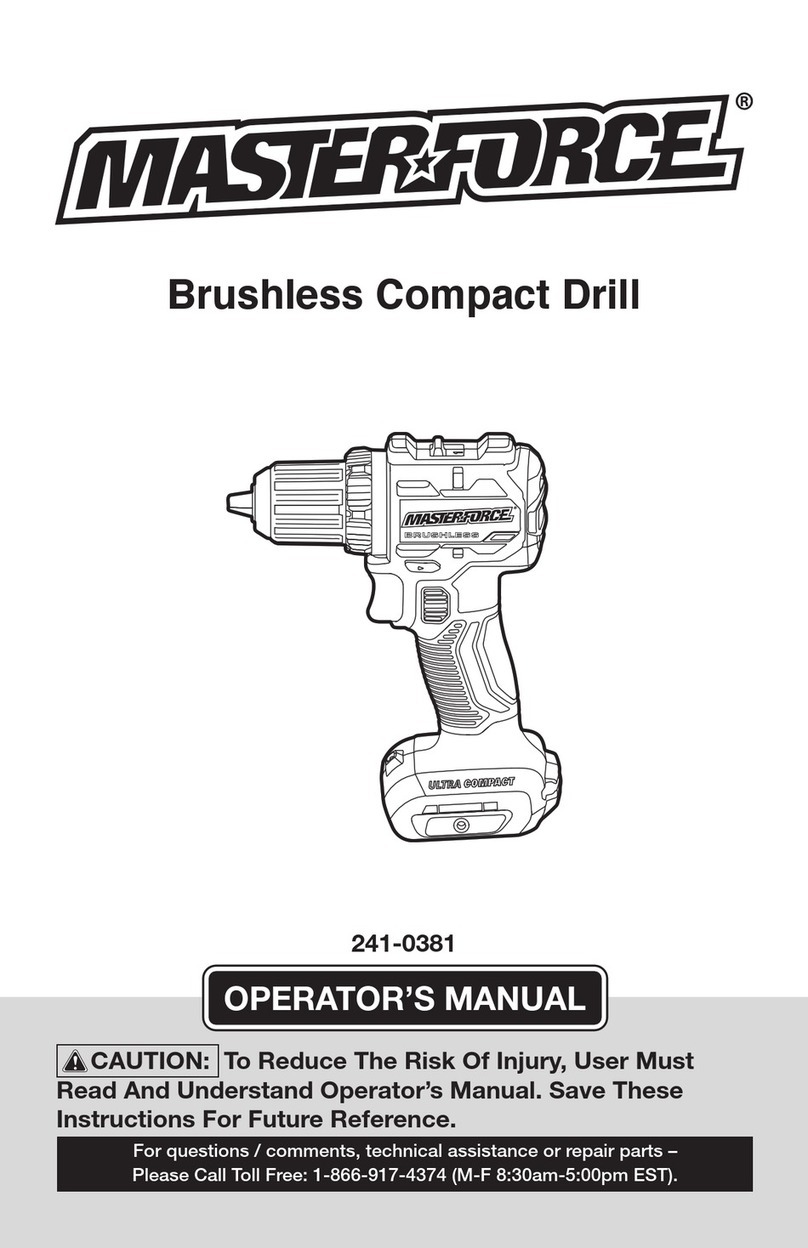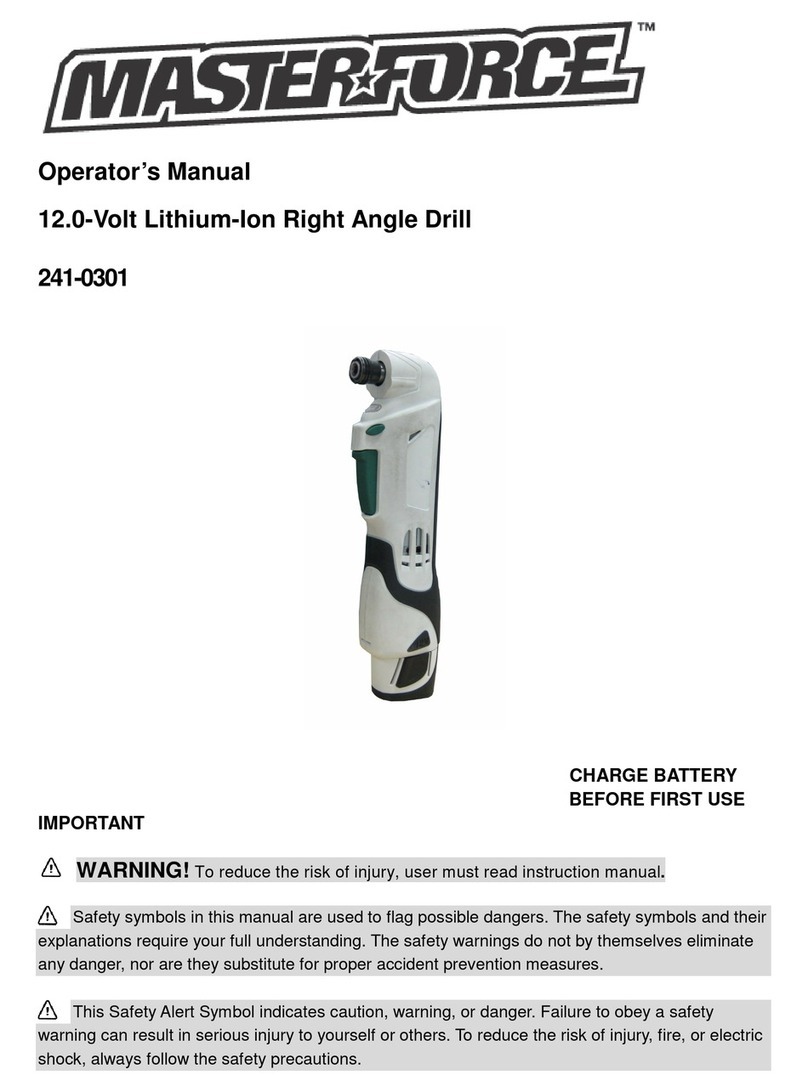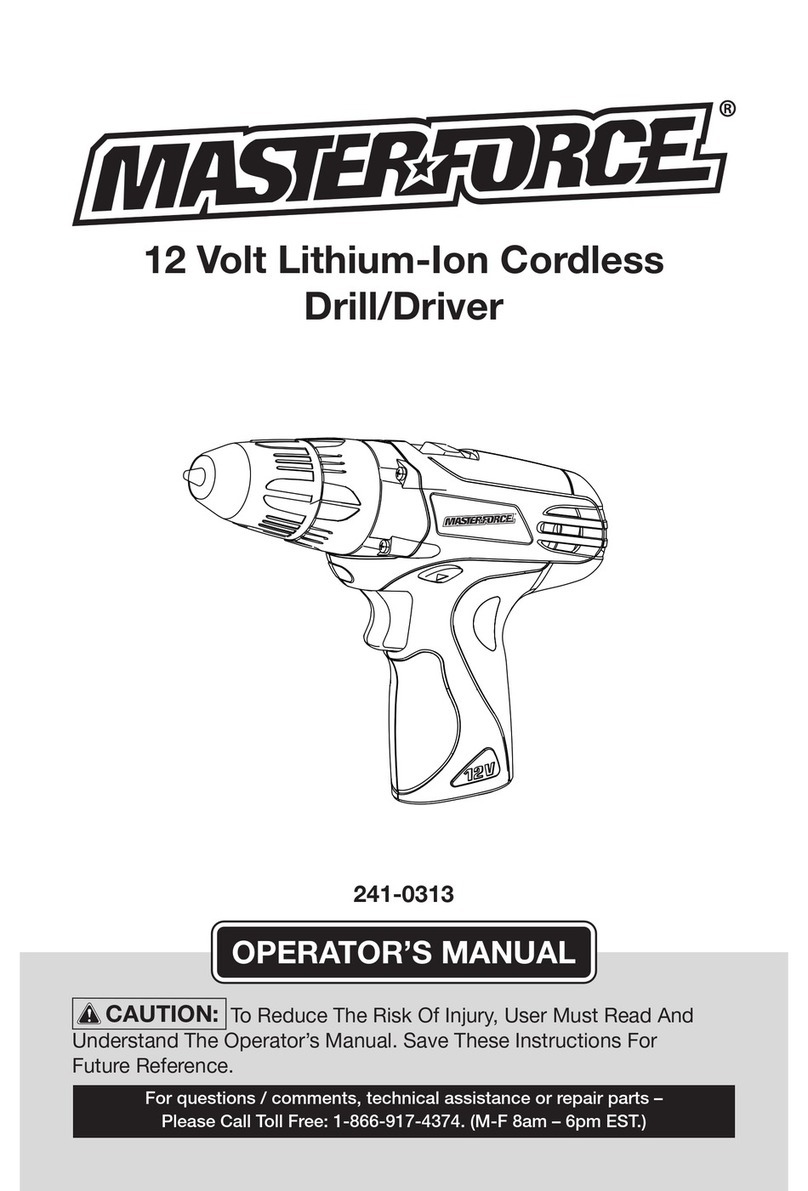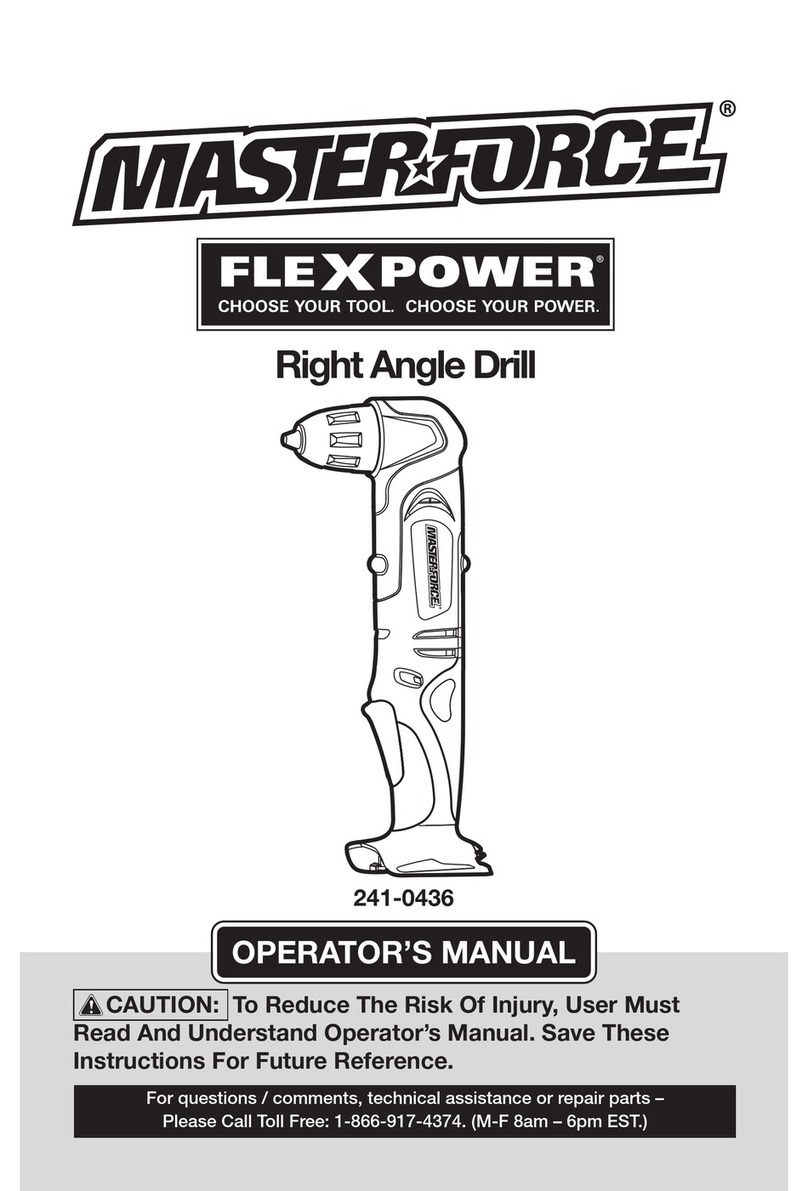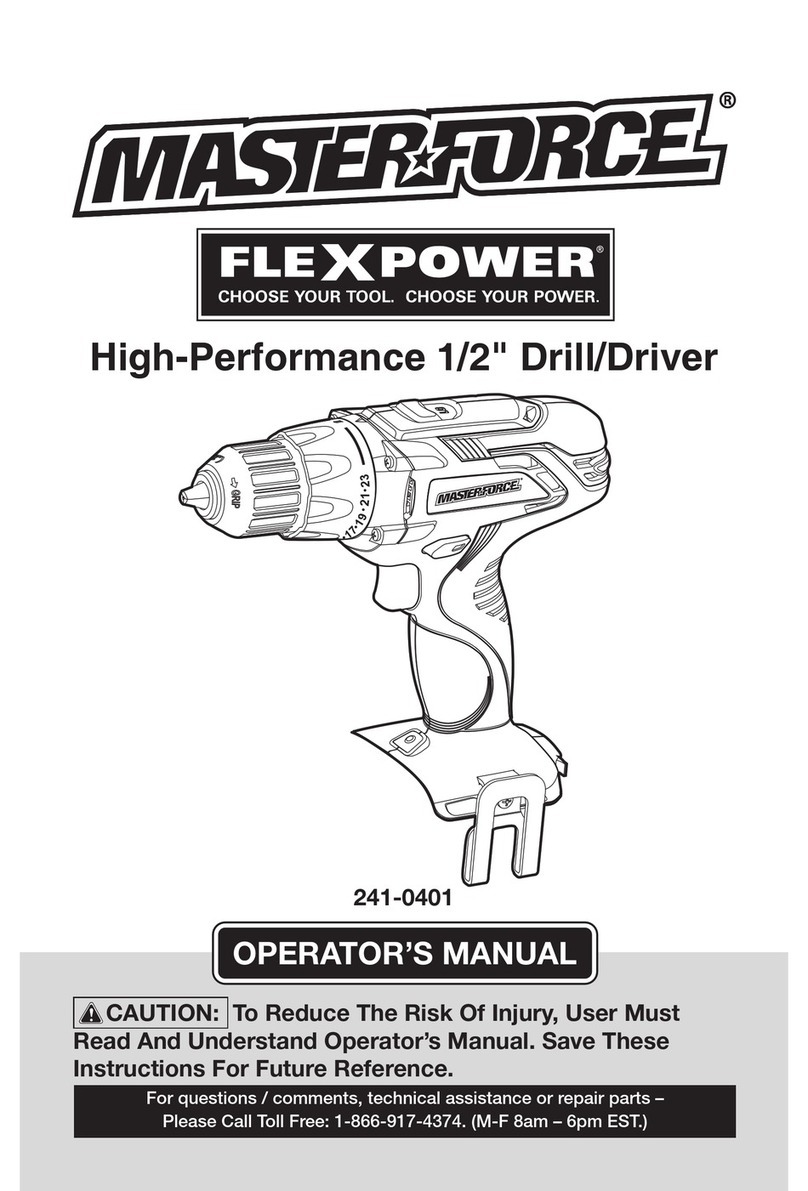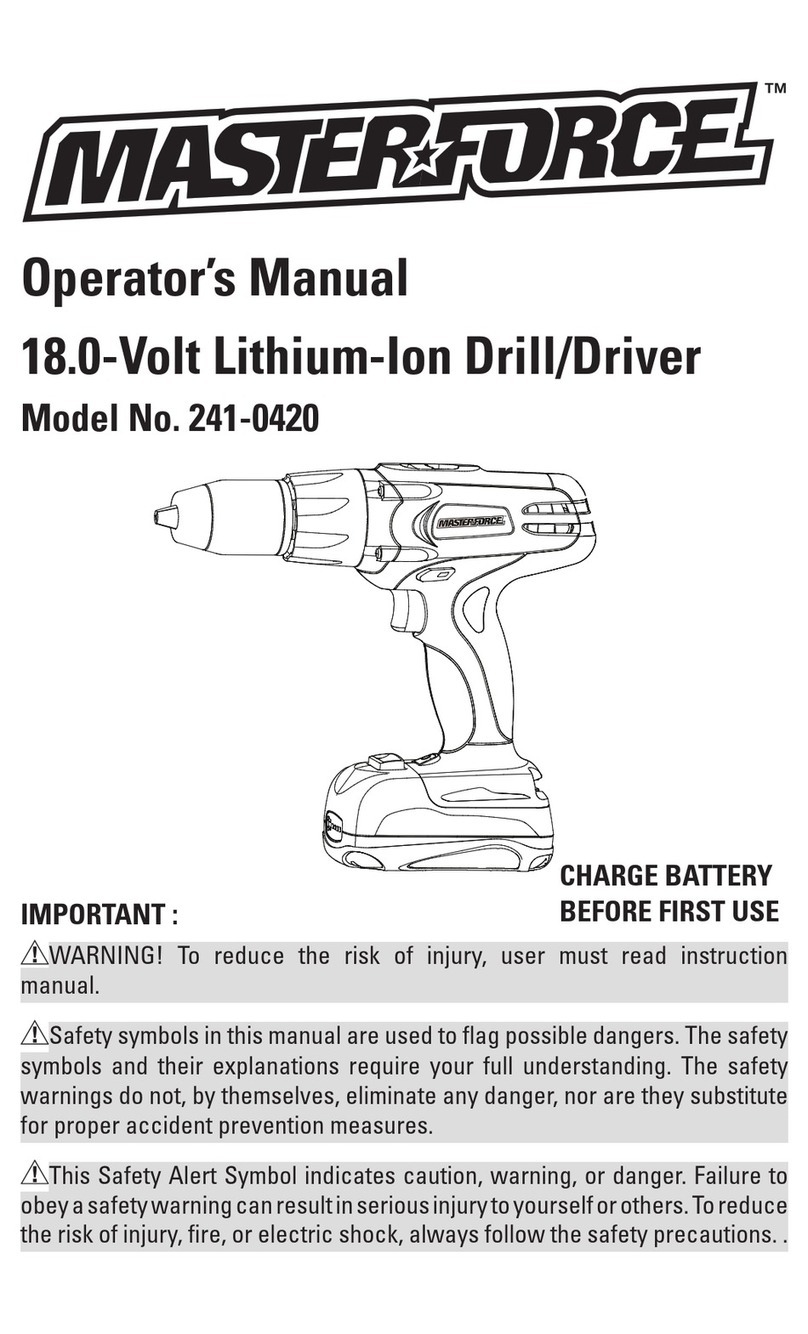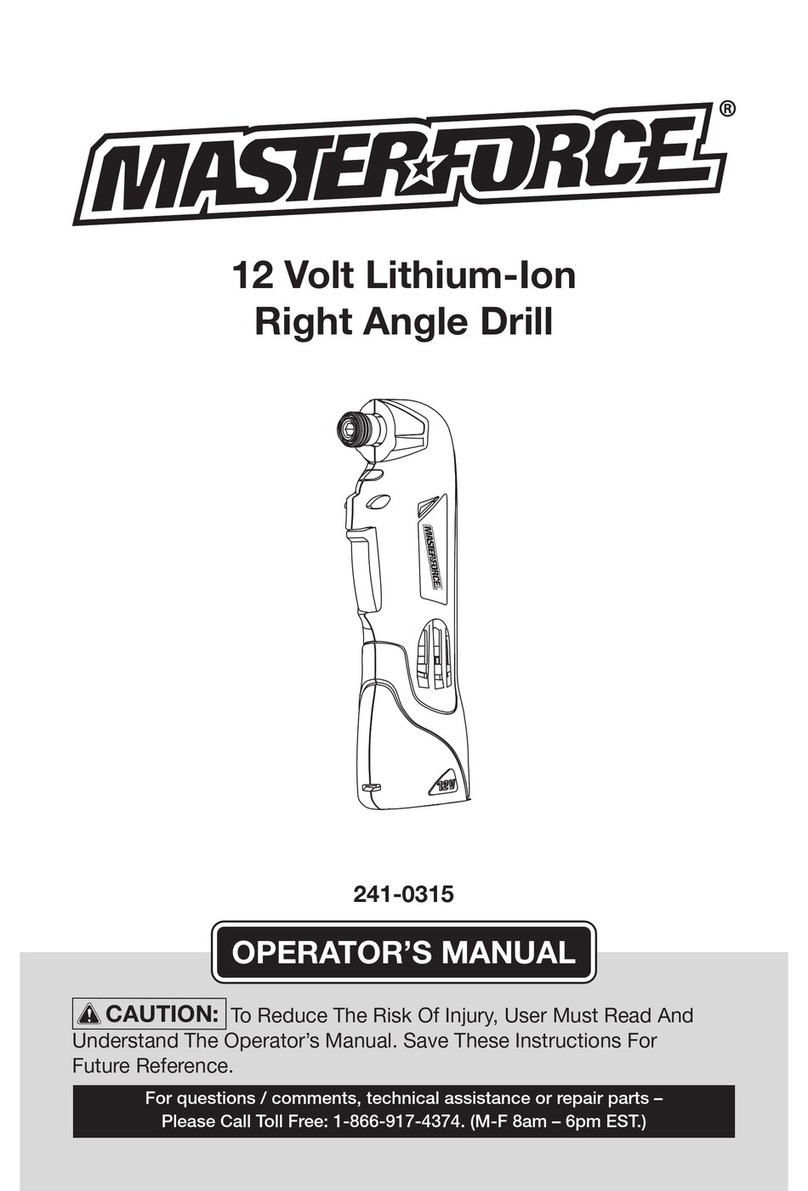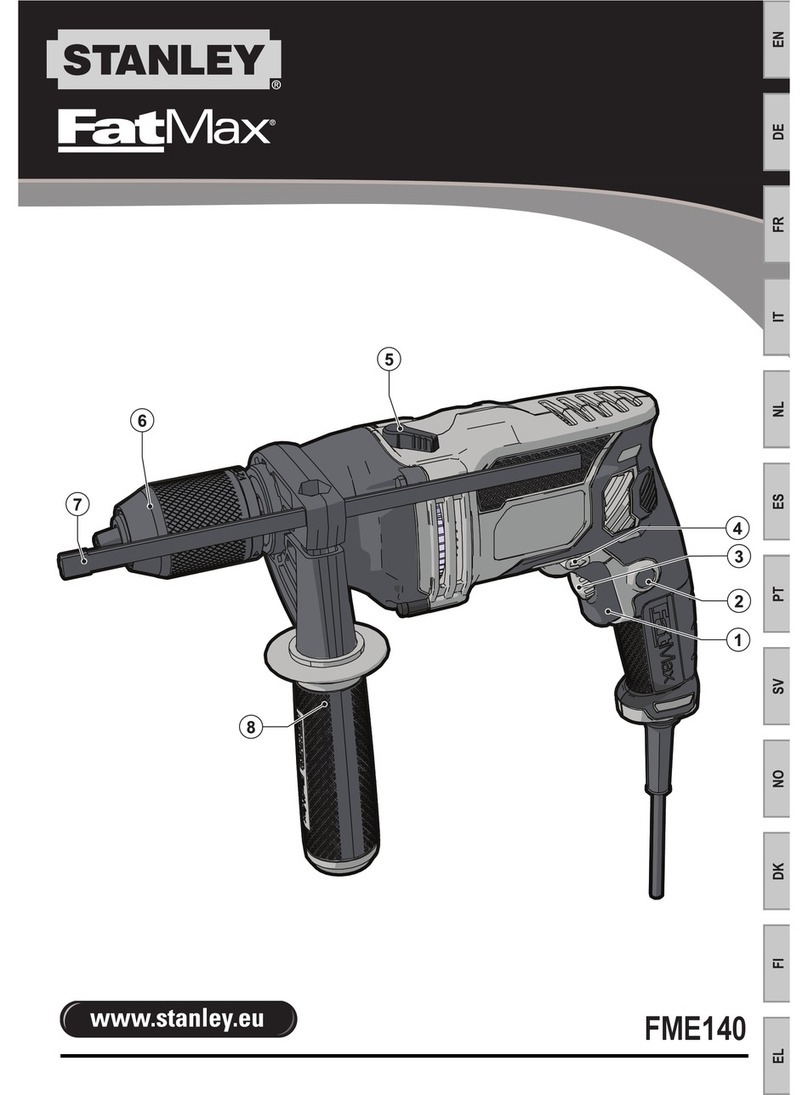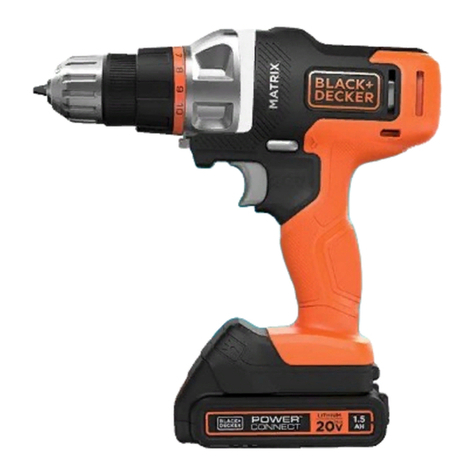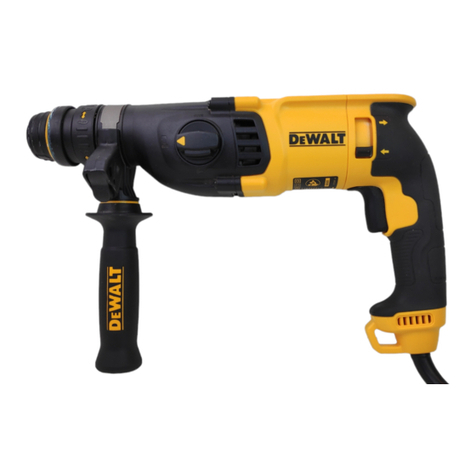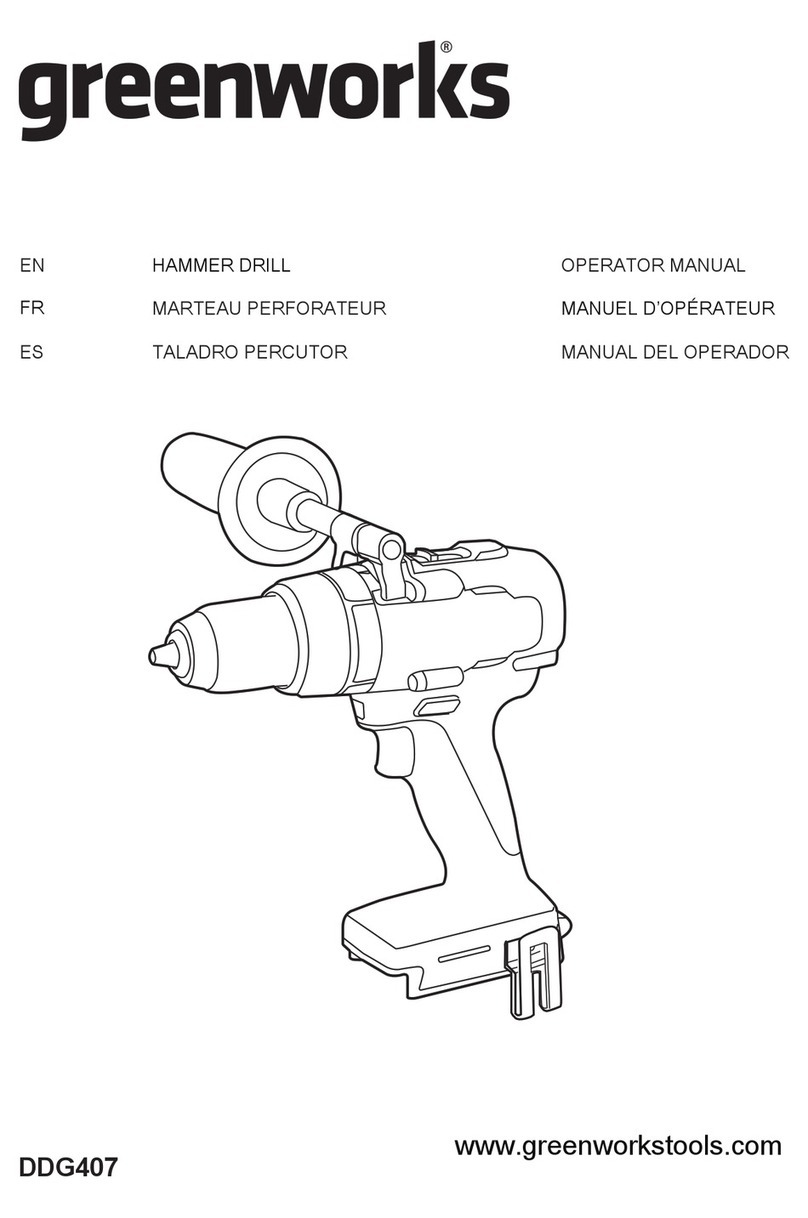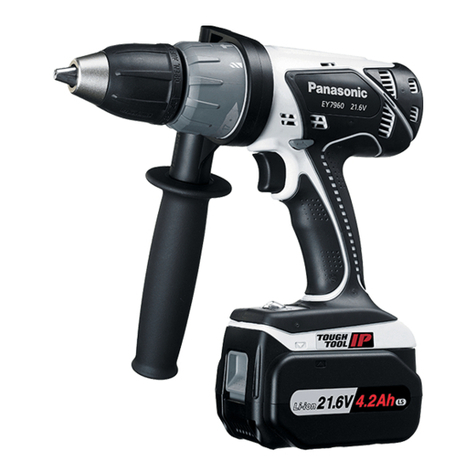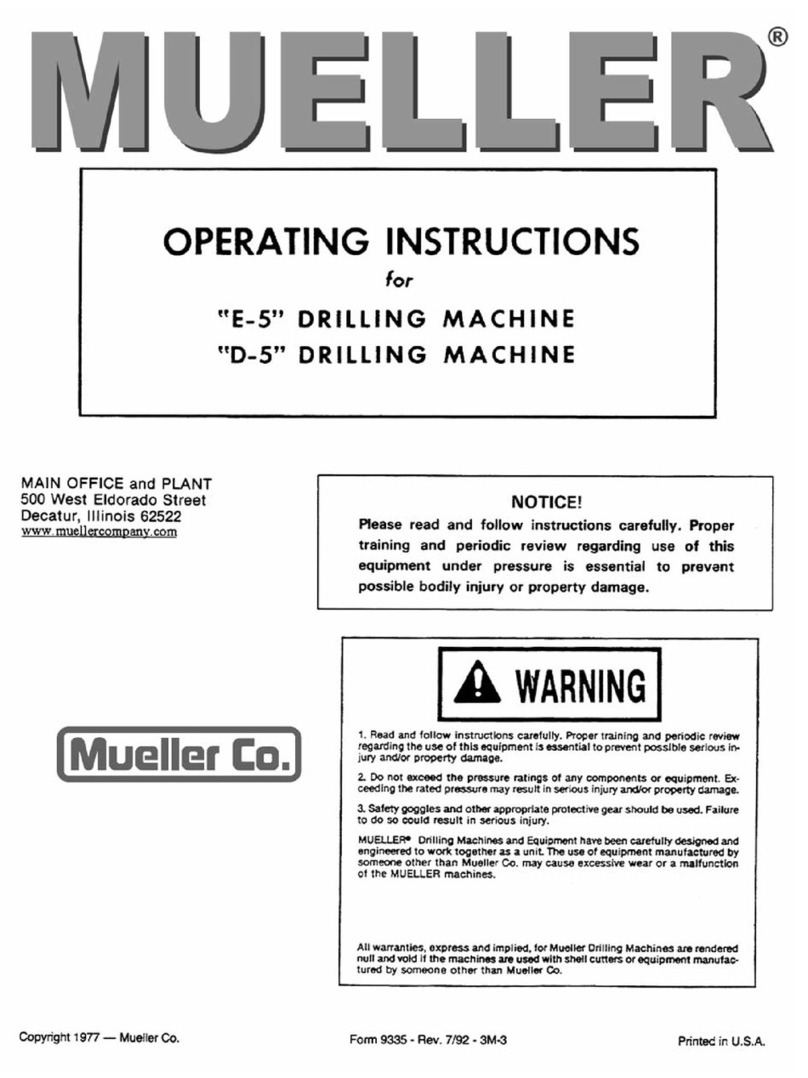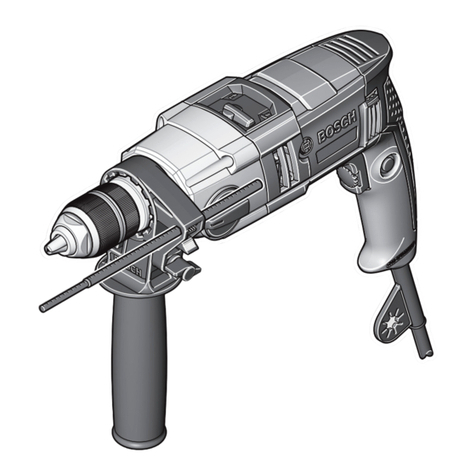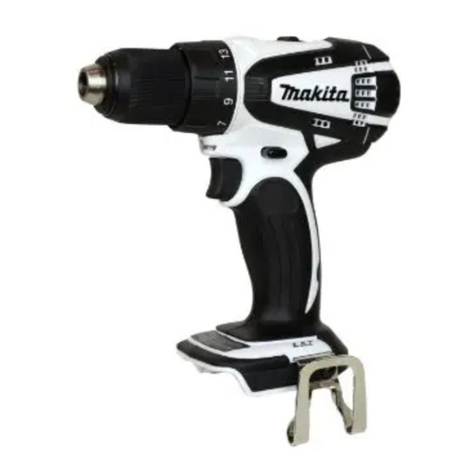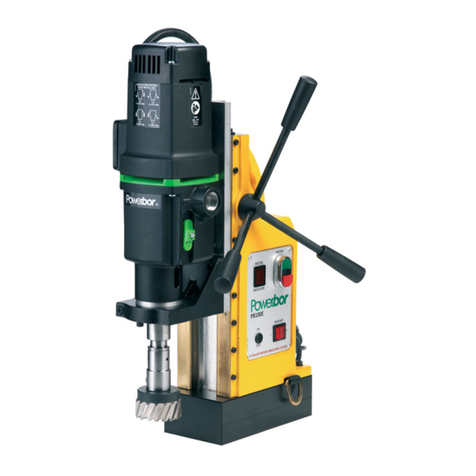Page 6
SAFETY INSTRUCTIONS
SPECIFIC SAFETY RULES FOR
BRUSHLESS DRILL/DRIVER
1. Know your drill/driver. Read operator’s
manual carefully. Learn the applications and
limitations, as well as the specific potential
hazards related to this tool. Following this
rule will reduce the risk of electric shock, fire
or serious injury.
2. Use auxiliary handle(s), if supplied with
the tool. Loss of control can cause personal
injury.
3. Hold power tools by insulated gripping
surfaces when performing an operation
where the cutting tool may contact hidden
wiring or its own cord. Contact with a “live”
wire will also make exposed metal parts of
the tool “live” and shock the operator.
4. Always wait until the machine has
come to a complete stop before placing it
down. The tool insert can jam and lead to
loss of control over the power tool.
5. Do not permit children to use the drill/
driver; it is not a toy.
6. Remove the battery pack from the
drill/driver before performing any routine
maintenance or cleaning.
7. Do not disassemble the drill/driver.
8. Do not place the drill/driver or battery
pack near fire or heat. They may explode.
9. Secure the workpiece. Clamping
devices or a vise will hold the workpiece in
place better than the hand.
10. Before performing any kind of work on
the tool (e. g. maintenance, bit change, etc.)
or when transporting and storing it, always
set the direction-of-rotation selector to
center off position. Unintentional activation
of the on/off switch may result in personal
injury.
11. Use protective gloves when removing
the bit from the tool, or allow the clamp
to cool down. The bit may be hot after
prolonged use.
12. Do not dispose of a worn out battery
pack by incinerating. Do not incinerate
the battery, even if it is severely damaged
or completely worn out. The battery may
explode in fire.
13. Do not operate the drill/driver or the
charger near flammable liquids or in a
gaseous or explosive environment. Internal
sparks may ignite fumes.
14. Keep the drill/driver dry, clean and free
from oil and grease. Always use a clean
cloth when cleaning. Never use brake fluids,
gasoline, petroleum-based products, or any
strong solvent to clean the drill/driver.
15. Save these instructions. Refer to them
frequently and use them to instruct others
who may use this tool. If you loan someone
this tool, also loan them these instructions.
DANGER: People with electronic
devices, such as pacemakers, should
consult their physician(s) before using this
product. Operation of electrical equipment
in close proximity to a heart pacemaker
could cause interference or failure of the
pacemaker.
WARNING: Some dust created by
power sanding, sawing, grinding, drilling
and other construction activities contains
chemicals known to the state of California
to cause cancer, birth defects or other
reproductive harm. Some examples of
these chemicals are:
• Lead from lead-based paints
• Crystalline silica from bricks and cement
and other masonry products, and
• Arsenic and chromium from chemically-
treated lumber.
Your risk from these exposures varies,
depending on how often you do this type
of work. To reduce your exposure to these
chemicals: work in a well ventilated area,
and work with approved safety equipment,
such as those dust masks that are specially
designed to filter out microscopic particles.
